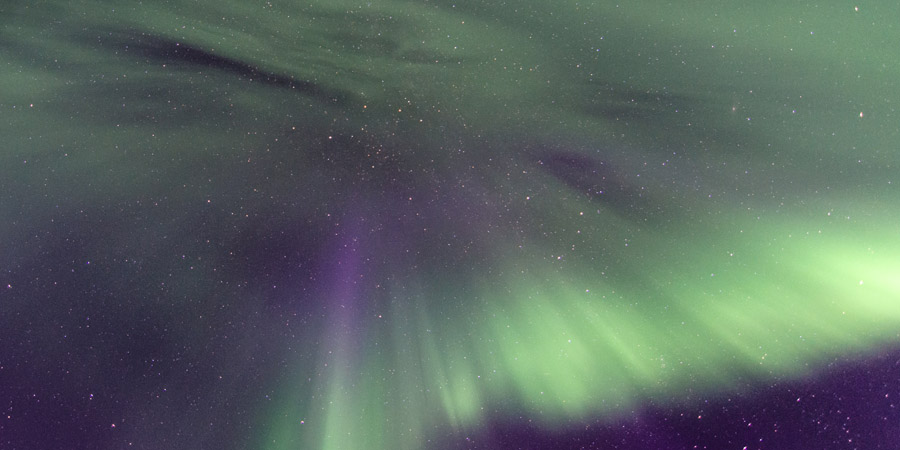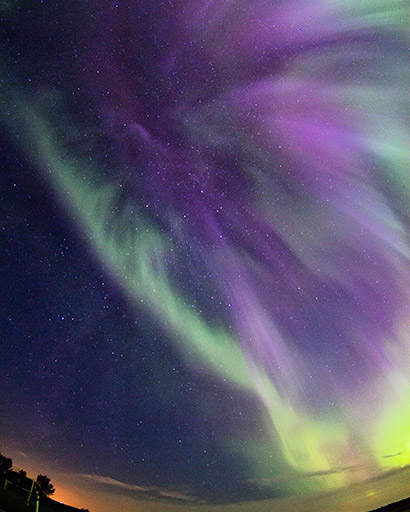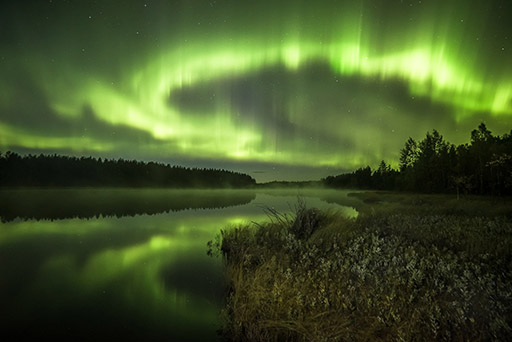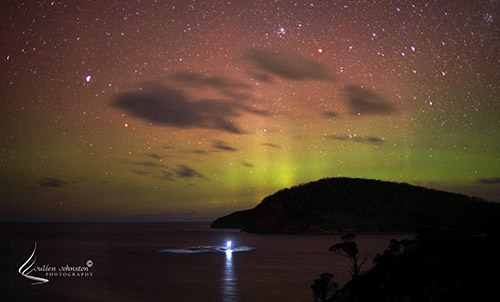A stormy start to September
Tuesday, 6 September 2016 18:56 UTC

It has been five crazy first days of this month as every single day thus far provided us with at least one 3-hour period where we reached geomagnetic storm conditions according to the NOAA SWPC. The first three days of this month even treated us with moderate G2 geomagnetic storming conditions. This was all thanks to a massive coronal hole system that has now started to rotate out of Earth's view. The solar wind stream has been diminishing in strength during the past hours and today will likely be the first day of this month that we will not reach the minor G1 geomagnetic storm level.
As a lot of you have found out with your own eyes, geomagnetic storms equal a lot of aurora! We've seen an incredible ammount of fantastic images and videos all made the past few days from all over the world. From Tasmania and Antarctica down under to the United States and even the Netherlands! Here comes a small selection of the work that we stumbled upon during the past few days:

#teamtanner (Alberta, Canada)

Robin Eriksson Franzén (Kalix, Sweden)

Julien Johnston (Tasmania, Australia)
pretty pillars danced across the bay! #AuroraAustralis #Tasmania pic.twitter.com/4XUopxADV8
— §nÖÖzy (@SussanSays) 3 september 2016
Winnipeg Beach @ExploreCanada @Travelmarvel_TM @AuroraMAX @StormHour @_SpaceWeather_ pic.twitter.com/m25vVObauT
— Kyra Lichtenstein (@Spinnefix1) 6 september 2016
My #aurora pix from last Friday night! North of Mitchell #Ontario Captured the #MilkyWay & another proton arc! pic.twitter.com/w5BU39W7VH
— Laura Duchesne ☄ (@LauraDuchesne) 7 september 2016
Weak red glow on the horizon, Egmond aan Zee The Netherlands. #Aurora borealis #poollicht @TamithaSkov @PoollichtBE pic.twitter.com/JWAoSiovUH
— Kees Zwaan (@Kees_Zwaan) 5 september 2016
One of the few places in the world that weren't so lucky the past few days was Troon in Scotland. Hats off to MJS Ferrier Photography for trying anyway:
Header image: Marcel de Bont Photography (Kiruna, Sweden)
Thank you for reading this article! Did you have any trouble with the technical terms used in this article? Our help section is the place to be where you can find in-depth articles, a FAQ and a list with common abbreviations. Still puzzled? Just post on our forum where we will help you the best we can!
Current data suggests there is a slight possibility for aurora to appear at the following high latitude regions in the near future
Arkhangelsk, Norilsk, VorkutaLatest news
Latest forum messages
Support SpaceWeatherLive.com!
A lot of people come to SpaceWeatherLive to follow the Sun's activity or if there is aurora to be seen, but with more traffic comes higher server costs. Consider a donation if you enjoy SpaceWeatherLive so we can keep the website online!

Latest alerts
04:03 UTC - Hemispheric Power Index
The OVATION model predicts the Hemispheric Power Index to reach 50GW at 04:56 UTC
01:45 UTC - Geomagnetic activity
Active geomagnetic conditions (Kp4) Threshold Reached: 01:32 UTC
Tuesday, 1 April 2025
22:51 UTC - Solar flare
Moderate M2.5 flare
22:30 UTC - Radio Blackout
Minor R1 radio blackout in progress (≥M1 - current: M1.45)
07:15 UTC - 10cm Radio Burst
Begin Time: 01/04/2025 06:45 UTC Maximum Time: 01/04/2025 06:45 UTC Duration: 1 minutes. Peak flux: 190 sfu
Space weather facts
| Last X-flare | 2025/03/28 | X1.1 |
| Last M-flare | 2025/04/01 | M2.5 |
| Last geomagnetic storm | 2025/03/27 | Kp5 (G1) |
| Spotless days | |
|---|---|
| Last spotless day | 2022/06/08 |
| Monthly mean Sunspot Number | |
|---|---|
| February 2025 | 154.6 +17.6 |
| April 2025 | 147 -7.6 |
| Last 30 days | 128.8 -21.8 |




